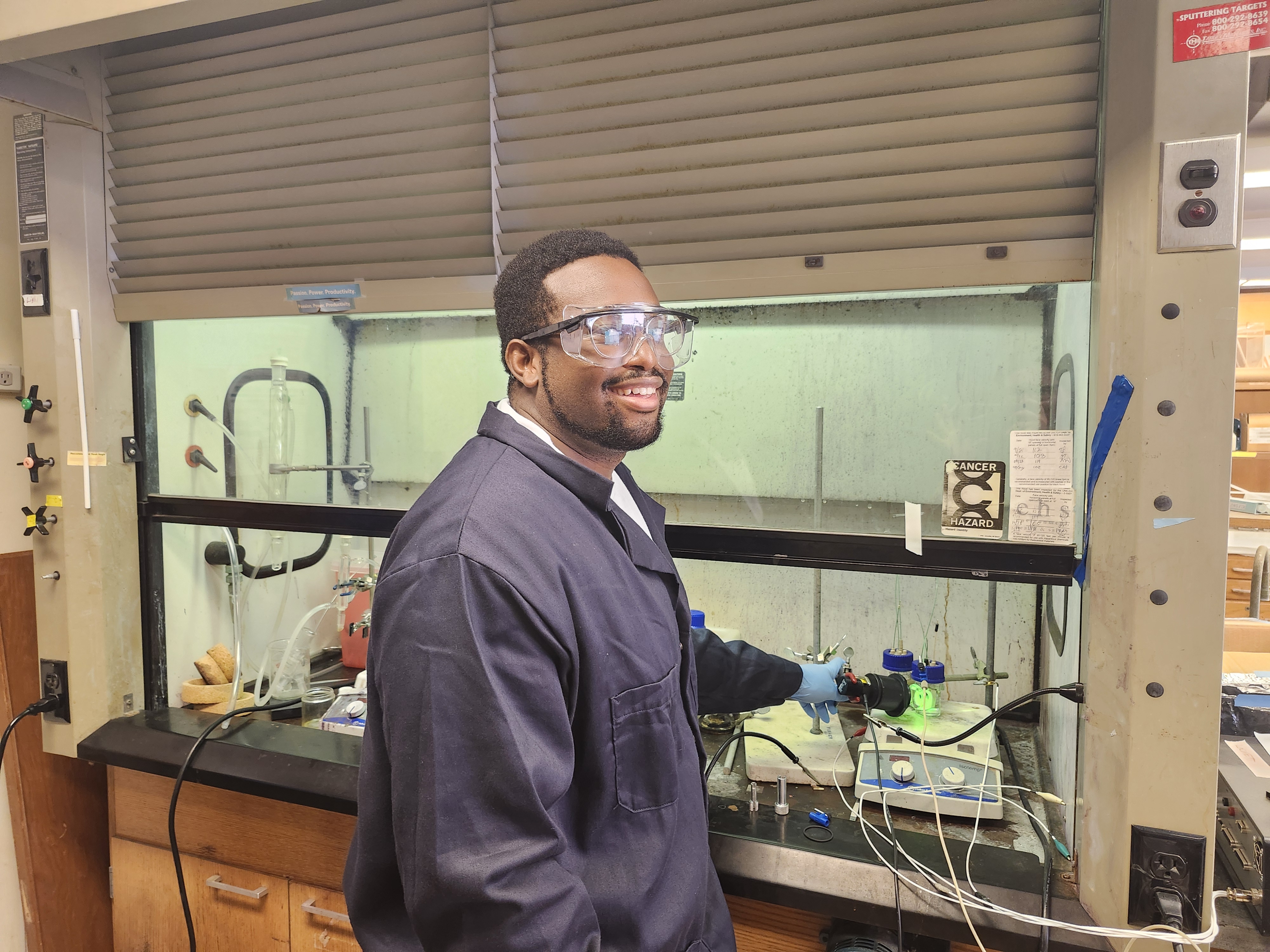
Matthew Lockett
Professor
Kenan Laboratories C348919-843-9440
mlockett@unc.edu
Group Website
Research Interests
3D Cell Culture Systems, Bioanalysis, Chemically Modified Electrodes, Microfabricated Devices, Surface Chemistry and Analysis, Sensors
Research Synopsis
We develop new analytical tools to study chemical phenomena occurring in complex biological and chemical systems—with a general focus on oxygen-regulated cellular signaling in tissues and electron transport at disordered interfaces on chemically modified electrodes. These models afford us exquisite experimental control, enabling structure-function relationships for small numbers of variables. We use these systems to build an overall understanding of the system through continued study, one hypothesis at a time. Our intellectual pursuits are not driven by a single measurement technique or approach but rather by adopting or adapting techniques that provide high sensitivity and accuracy. Some of the areas we are currently pursuing are:
3D Cell Culture Platform Development for Quantitative Studies of Hypoxia
Tissues and organs are three-dimensional structures composed of multiple cell types and extracellular matrices. These structures are spatially and temporally dynamic, with cells receiving regulatory cues from both abiotic factors and intracellular signaling molecules. Current methods of cell culture rely on monolayers of cells grown on plasticware. While these cultures are easily prepared and analyzed, they lack the realistic tissue architectures and physiologically relevant microenvironments found in vivo. These simplistic models often cannot predict cellular responses to drugs, environmental toxins, or other extracellular signals. We are preparing and characterizing new 3D culture platforms and measurement tools to meet these needs, focusing on tissue-representative microenvironments with materials and techniques readily accessible to any laboratory currently working with cells.
We are particularly interested in answering questions about oxygen's role in maintaining tissue homeostasis, directing cellular movement, and promoting aggressive and drug-resistant cancer phenotypes. In one approach, we construct thick tissue- or tumor-like structures by stacking layers of paper that contain cell-laden hydrogels. We can generate defined microenvironments with these paper-based cultures and relate oxygen tension to cellular responses to drugs or other external stimuli.
In Vitro Drug Metabolism and Models
There is a need for more predictive models of patient responses to drug therapies, particularly adverse drug-drug interactions. When placed in 3D culture environments, human hepatocytes (i.e., liver-specific cells responsible for drug metabolism) maintain their metabolic competency for more extended periods than when cultured as monolayers. An essential next step for 3D liver models is to engineer zonation into these cultures. Zonation is the spatial distribution of hepatocytes with defined metabolic functions along a blood vessel-like sinusoid. This organization of cellular function is responsible for multistep modifications of drugs as they move through the liver. Using the paper-based culture platform, microfluidic devices, and more traditional 3D culture setups, we generate liver-like environments and focus on identifying factors that promote and maintain zonation.
Quantifying Disorder on Chemically Modified Electrodes
Carbon materials have tunable electronic properties and unprecedented chemical stability, and thus, are ideal substrates for appending electroactive molecules or catalysts. The covalent attachment of molecules to carbon materials results in monolayers whose density may not be uniform and packing structures in which surface-bound molecules can readily adopt new orientations when perturbed. This disorder can lead to unexpected interactions and enhanced functionalities, observable with ensemble measurements. However, molecular-level details are challenging to pinpoint.
We are developing new attachment chemistries and measurement techniques to evaluate disorder on planar carbon electrodes. Our goal is to develop the design rules needed to leverage this innate disorder and impart desired physical or chemical properties of carbon and silicon materials through molecular engineering approaches.
Rationally Designed Surfaces for Improved Catalyst Stability and Performance
The chemistries required to modify the surface of carbon and silicon electrodes are often too harsh to append molecular catalysts to the surface directly. Instead, an initial layer of molecules with distinct chemical handles is attached to the surface, allowing for future installation of molecules through simple coupling chemistries. These chemistries provide a unique opportunity to tune the catalyst and electrode's chemical composition (e.g., its overall hydrophobicity, charge state, or ability to participate in hydrogen bonding). We develop methods to prepare arrays of chemically modified electrodes in an addressable and defined manner. This approach allows us to screen the impact of surface chemistry on catalyst performance and durability.
Professional Background
University of Pittsburgh, BS in Chemistry, 2005; University of Wisconsin-Madison, Ph.D. in Chemistry with Lloyd M. Smith, 2009; Harvard University, Postdoctoral Fellow with George M. Whitesides, 2010-2013
News & Publications

UNC-Chapel Hill chemistry researchers have discovered a new way to attach powerful carbon dioxide-reducing molecules to silicon surfaces that could help scientists harness sunlight to turn carbon dioxide into useful fuels and chemicals.

Researchers found that certain PFAS may do more than just hang around. They might also make some breast cancers more aggressive over time.

